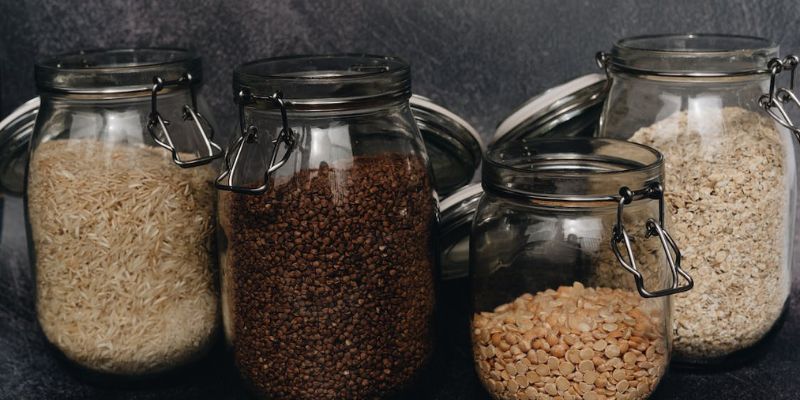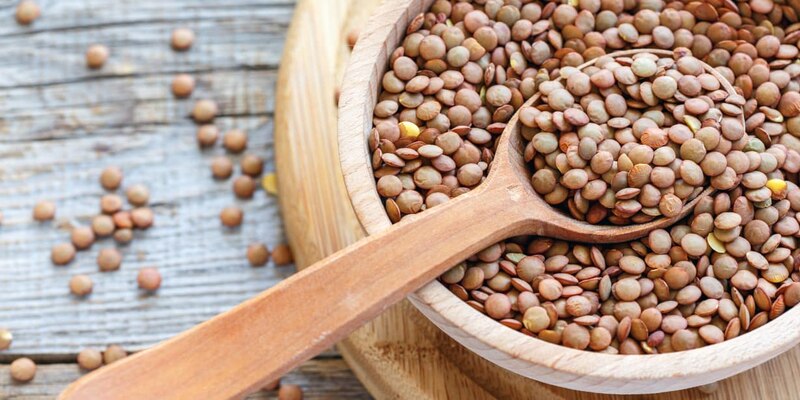Lentils have earned their status as a superfood. Packed with protein, fiber, and an array of essential vitamins and minerals, lentils offer a powerhouse of health benefits. From supporting heart health to promoting digestive wellness, their versatile nature makes them a staple for nutritious and delicious meals.
Different Types of Lentils

Lentils come in a rainbow of colors with unique flavor and texture. Here's a quick guide to the varieties you'll find. Red lentils are more orange and tend to get very soft when cooked, breaking into a thick puree.
Green lentils (also called brown lentils) retain their shape when cooked and have a nutty, earthy flavor. They work well in salads, stews, and as a side dish. Green lentils pair nicely with garlic, thyme, parsley, and a vinegar or citrus juice splash.
Black lentils are small, lens-shaped, and turn deep purplish-black when cooked. They stay firm when cooked and have a robust, mushroomy flavor. Black lentils are commonly used in Indian cuisine and stand up well to bold spices.
Golden lentils are yellow-orange and have a sweet, buttery flavor. They soften when cooked but still hold their shape. Golden lentils work great in salads, stews, and soups. They pair well with coconut milk, turmeric, cumin, and fresh cilantro.
Lentil Nutrition Facts

Lentils contain 18 grams of protein and all nine essential amino acids our body needs, making them an excellent plant-based source of protein. Lentils contain 16 grams of fiber, which are high in both soluble and insoluble. They aid digestion, keep you full, and help maintain healthy blood sugar levels.
With 90% of your daily folate needs in just one cup, lentils are great for cell growth and metabolism. Lentils contain 37% of your daily iron requirement, essential for red blood cell production and preventing anemia. They also have 28% phosphorus necessary for bone health, cell growth, and retaining energy.
Lentils contain 22% of your daily thiamine requirement. Manganese is essential for bone health and metabolism, and lentils provide 49% of your daily manganese needs. Lentils also contain 24% of your daily copper needs. Copper plays a significant role in red blood cell formation, immune function, and healthy bones and tissues.
The Health Benefits of Eating Lentils
Lentils are nutritional powerhouses. Eating them regularly has excellent health benefits. Lentils are packed with fiber; fiber helps keep you regular and also helps feed the good bacteria in your gut. A healthy heart means better immunity and improved nutrient absorption.
The fiber, protein, and complex carbohydrates in lentils provide energy that is slowly released and long-lasting. Unlike the sugar crash from refined carbs, lentils won't spike and drop your blood sugar.
The iron, magnesium, and B vitamins also help convert the food you eat into energy. Lentils fill you up but are low in calories to aid in weight loss and maintenance. Their protein and fiber satisfy you and have a low glycemic index.
How to Cook Lentils for Maximum Nutrition
Proper cooking technique is the key to getting maximum nutrition from lentils. Here are some tips for cooking lentils:
- Rinse lentils in a fine-mesh strainer before cooking to remove dirt or debris. Rinsing also helps reduce excess starchiness, which can make lentils mushy.
- For every 1 cup of lentils, use 2 to 3 cups of water. Too much water will drain the lentils of nutrients. Lentils will absorb most of the cooking liquid, so keep an eye on the pot and add more water as needed.
- After bringing lentils and water to a boil, reduce heat and simmer until lentils are tender.
- While simmering, add aromatics like diced onions, carrots, celery, minced garlic, or fresh or dried herbs. The aromatics will infuse the lentils with flavor without impacting nutrition.
- Simmer lentils just until tender when bitten. Overcooking lentils can deplete them of nutrients and cause them to become mushy.
- Drain lentils thoroughly after cooking and season them with salt and pepper or your favorite spices like cumin, thyme, or turmeric. Seasoning lentils helps boost their flavor, so you're more likely to eat them often!
Creative Ways to Enjoy Lentils: Recipes and Serving Tips
Lentils are highly versatile and perfect for creative, delicious recipes. Lentil soup is comforting and packed with nutrition. Simmer lentils with veggies like carrots, celery, and onions in broth until thickened. Puree some of the lentils for a creamier soup, or keep chunky for a heartier stew. Lentil chili, made with tomatoes, spices, and veggies, is also satisfying.
Lentil salads are healthy, filling, and ideal for meal prep. Cook lentils, then toss them with vinaigrette and fresh or roasted veggies such as spinach, beets, feta, or goat cheese, and nuts or seeds like walnuts or sunflower seeds. Mediterranean-inspired salads with olive oil, lemon juice, parsley, mint, and veggies are incredibly flavorful.
Cooked lentils are perfect for grilled chicken, fish, or a burger. Mash cooked lentils with olive oil, lemon juice, and spices for Lentil Mujadara, a Middle Eastern favorite.
For vegetarian burgers, combine cooked lentils with binders like eggs, mashed beans, breadcrumbs, or crushed cereal. Season with chili or Italian spices and grill, bake, or pan-fry. Lentil meatballs are also delicious in pasta sauce, chili, or sandwiches. Roll the lentil mixture into balls and bake until firm.
Conclusion
Lentils are among the most nutritious and sustainable foods, so adding them to your diet is a great choice. They're perfect for boosting energy, improving heart health, and managing blood sugar. Lentils are also incredibly versatile and budget-friendly.




